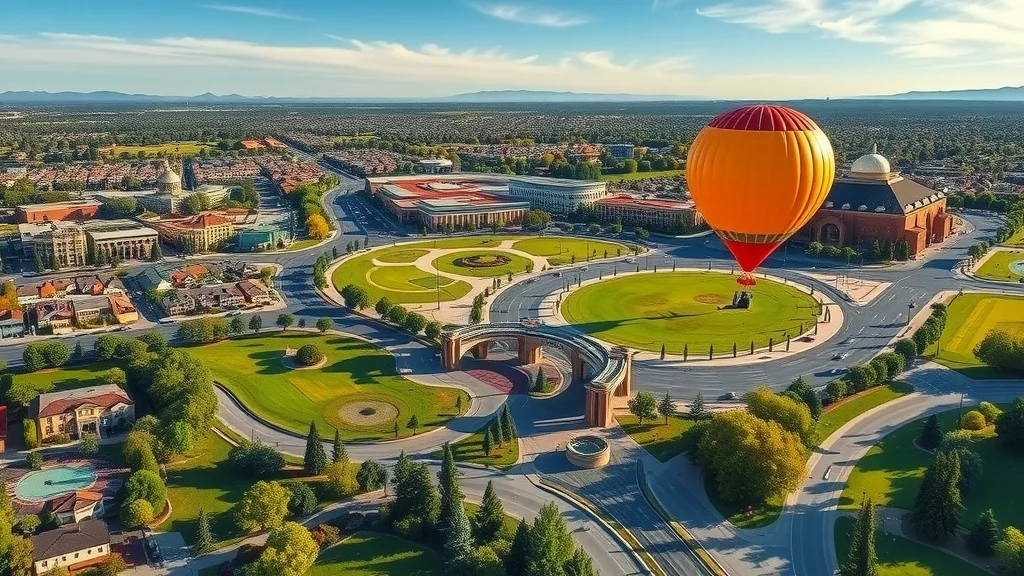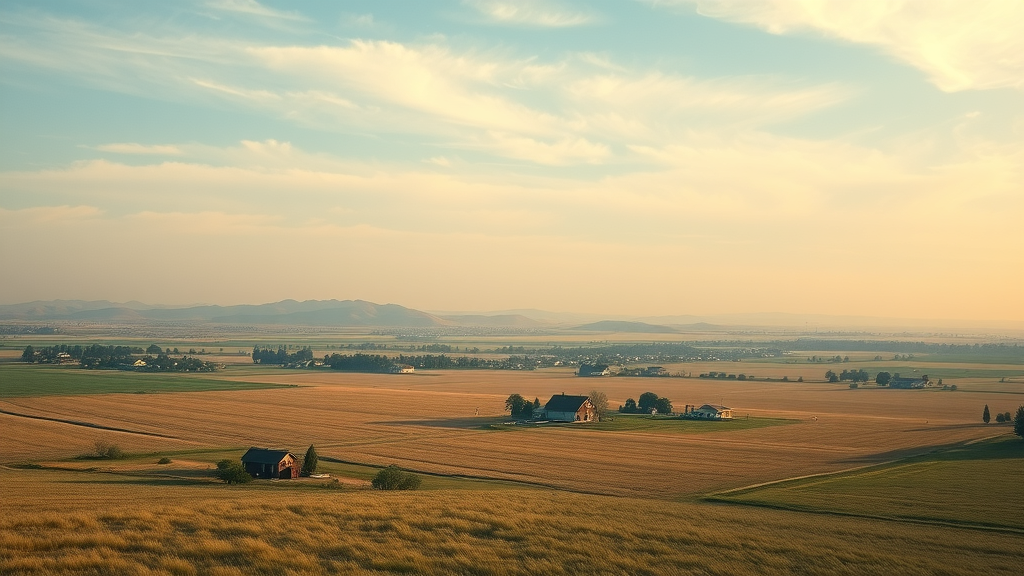Did you know that what’s now the City of Irvine was once one of the largest privately owned ranches in the entire United States, stretching nearly 110,000 acres, almost double the size of the modern city? Unraveling the story behind Irvine, CA, history reveals a journey of innovation, diversity, and discovery. This guide is your ticket to understanding how a patchwork of ranchlands blossomed into one of Orange County’s most dynamic and desirable cities and unveils a few local gems you may have never heard about.
Why Irvine, CA stands out in Southern California
Key historical figures: Benjamin & Thomas Flint, Llewellyn Bixby, James Irvine
The evolution of the Irvine Ranch and its impact on modern Irvine
Irvine’s transformation through master plan urban development
Cultural diversity and community highlights
A Surprising Look at Irvine, CA History: Startling Facts and Unconventional Origins
The history of Irvine, CA is far from ordinary. Not only did it emerge from the ambitions of a few pioneering families, but the city’s legacy also reflects California’s most significant land deals and transformations. The area originally included lands from major Mexican land grants like Rancho San Joaquin and Rancho Santiago de Santa Ana. In 1864, Benjamin and Thomas Flint, Llewellyn Bixby, and James Irvine purchased these colossal ranchlands. What makes this origin so unconventional is its blending of Spanish, Mexican, and American eras, mixing Native American roots with new waves of ranchers and, later, urban visionaries.
Even before Irvine was recognized on any map, it played a silent role in California's shifts from Spanish explorers dividing up land grant territories to the Flint-Bixby-Irvine partnership laying the foundation for today’s master-planned community. The bold moves and strategic vision of these original founders turned ranchland into what was soon to be one of the state’s most sought-after areas. Irvine, CA, history reveals a narrative of risk-taking, community-building, and continuous evolution, helping the city stand out among Orange County and even all of Southern California.
From Ranchlands to a Thriving City: How Benjamin & Thomas Flint, Llewellyn Bixby, and James Irvine Shaped Irvine, CA History
Without the teamwork of Benjamin & Thomas Flint, Llewellyn Bixby, and James Irvine, the city we know today simply wouldn’t exist. The group acquired Rancho San Joaquin and additional land grants, with goals of raising sheep and cattle across the sun-drenched hills. Later, they divided their holdings, with the Irvine family establishing dominion over what became known as the Irvine Ranch. Their agricultural pursuits flourished, turning volcanic soil and open fields into a patchwork of crops. James Irvine and his descendants showed stewardship that protected the land, setting the stage for decades of visionary planning.
As new transportation routes reached Orange County and Los Angeles, the ranch’s fortune turned from livestock to crops and eventually to land development. Irvine Ranch became the foundation for a master-planned vision a city built not by accident, but by detailed, forward-thinking design. That legacy is felt today in Irvine’s high quality of life, diverse population, and steadfast commitment to preserving history even as it grows.
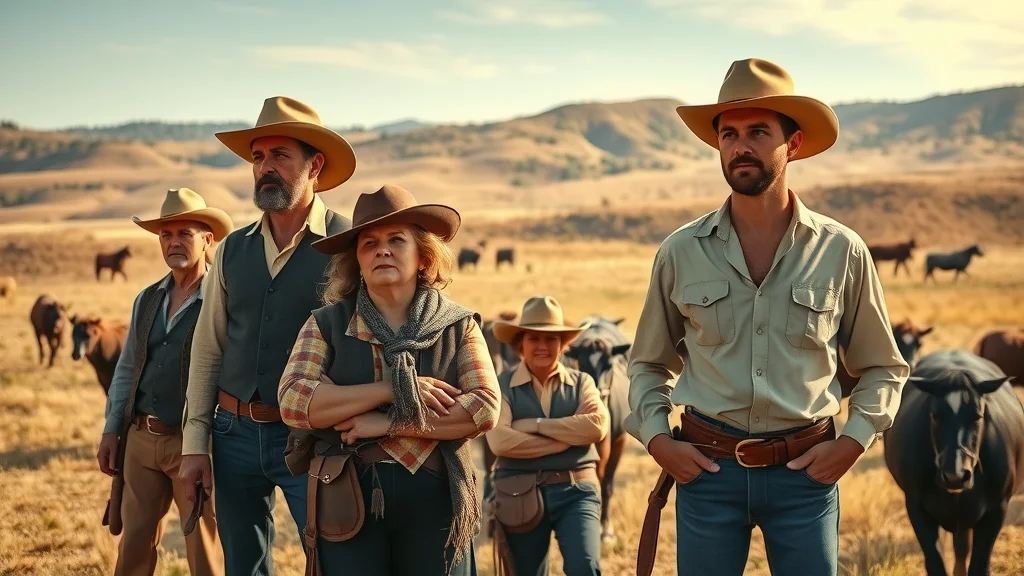
City of Irvine: The Birth and Rise of Irvine, CA
The City of Irvine was not just founded; it was meticulously planned from the start. After decades of agricultural success, the Irvine Company, under the guidance of the Irvine family, shifted its focus to developing a world-leading model of urban planning. In 1971, Irvine was officially incorporated as a city within Orange County, following the “master plan” designed by architect William Pereira. This plan emphasized open spaces, distinct neighborhoods, and community amenities, setting a national standard for the “planned community.”
Through all its changes, Irvine maintained its strong connection to the land and its unique history. The city’s birth and growth echoed earlier ambition: blending careful planning with the pioneering spirit that defined the original Irvine Ranch. Its rise from ranch to suburban enclave and now to a regionally significant urban hub shows how local visionaries harnessed the area’s potential to create a place where people want to live, work, and innovate. The results are visible every day in the tree-lined streets, bustling shopping districts, and culture of safety that distinguish the city of Irvine in both Orange County and all of Southern California.
The Formation of the City of Irvine and Its Place in California’s History
Few cities in California have such a deliberate and remarkable origin as Irvine. After accumulating the land for nearly a century, the Irvine Company and city planners collaborated to lay out a framework for the city’s present and future. This comprehensive approach was groundbreaking; it sought to balance residential, commercial, and educational land uses while protecting open space in sharp contrast to the sprawling, unplanned growth common elsewhere in Orange County and the United States.
As the population expanded, especially post–World War II, the city adapted its plans with new amenities and a dedication to safety, diversity, and quality of life. The story of how the City of Irvine rose to prominence is inseparable from its unique experiment in American urban development, a living showcase of innovation, environmental sensitivity, and community engagement.
"Irvine's transformation from vast ranchland to a bustling modern city was built on vision, innovation, and community spirit."
Irvine Ranch: Foundation of the Irvine, CA History
At the root of Irvine, CA history is the famed Irvine Ranch, whose evolution mirrors California’s own story. Once a rolling expanse assembled through a series of land grants and business deals, the ranch was initially used for sheep, grains, and citrus. Through the 20th century, it shifted towards urbanization while preserving vast stretches of open land, a rare move in rapidly developing Orange County.
Today, remnants of the original Irvine Ranch provide hiking trails, nature parks, and historic sites, all reminding locals and visitors of the city’s rural beginnings. By keeping large swaths of land public, the Irvine Company fostered a unique sense of place, one tightly linked to the land’s rich tapestry and ongoing story. The careful stewardship of these lands and their gradual transformation speak volumes about why Irvine remains so distinctive among modern American cities.
Timeline of the Irvine Ranch: Land Assemblage, Agricultural Boom, and Urbanization
Irvine’s journey from open rangeland to bustling metropolis unfolds like a timeline of California itself. In 1864, Benjamin and Thomas Flint, Llewellyn Bixby, and James Irvine purchased the lands that would grow into the Irvine Ranch, combining holdings from Rancho San Joaquin and neighboring land grants. Agricultural innovation soon followed sheep ranching evolved into citrus groves, bean fields, and eventually the backbone of Orange County’s commercial agriculture.
By the mid-20th century, the region was primed for change. The post–World War II boom and the arrival of major freeways made the land valuable for new kinds of growth. In 1965, the founding of the University of California, Irvine, set the stage for a fresh wave of community development. And by 1971, the city of Irvine was formally incorporated, accelerating its evolution from farmlands into the thriving, master-planned community beloved today.
Milestones in Irvine, CA History |
Date |
Key People and Events |
|---|---|---|
Ranchland Assembly |
1864 |
Flint, Bixby, Irvine |
Official City Incorporation |
1971 |
Irvine Company |
Development of the University of California, Irvine |
1965 |
University Planners |
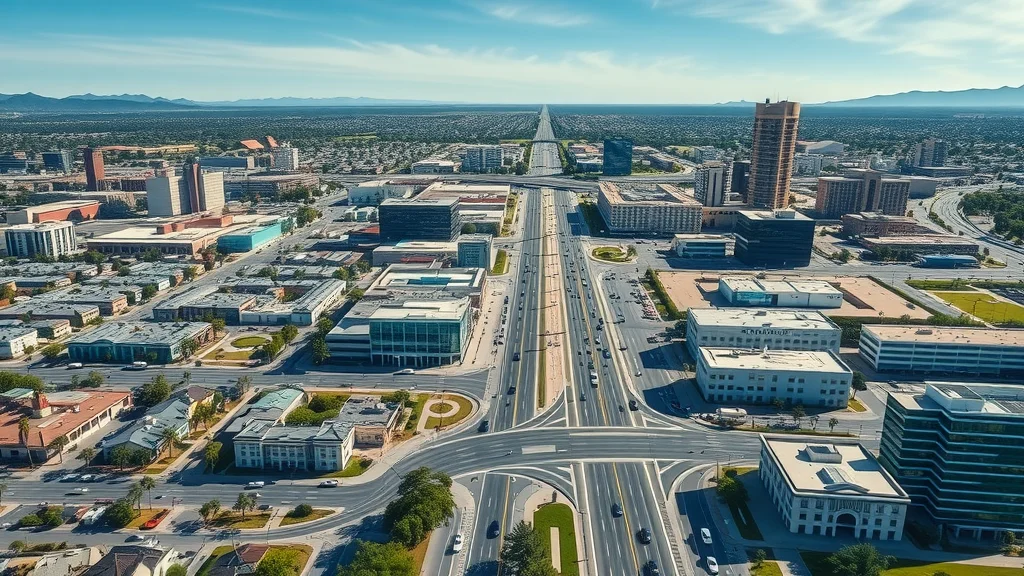
Master Plan and Urban Development: Shaping Modern Irvine, CA History
Irvine’s most unique feature is its master plan a detailed blueprint guiding everything from business parks to bike paths. Unlike most fast-growing cities, where expansion can be chaotic, Irvine’s layout was designed to maintain an outstanding quality of life, prioritize open space, and ensure seamless connections among schools, parks, and neighborhoods. Each “village” within Irvine features its own parks, community pools, and elementary schools a testament to carefully conceived urban development.
This master plan wasn’t static. As Irvine grew, it incorporated new demands: tech campuses, cultural centers, and sustainable design principles, all reflecting the city’s mission to stay ahead of population trends and resident needs. The result is an urban environment that feels cohesive and inviting, where the urban development legacy is reflected in both amenity-rich neighborhoods and thriving business districts, all while preserving large stretches of wildlands for generations to enjoy.
The Master Plan: How Urban Development Redefined Irvine, CA
The master plan that defines Irvine, CA history wasn’t just about building houses. Planners wanted a city where residents could live, work, and play without sacrificing safety or green space. This all-encompassing approach allowed Irvine to blossom into one of the most desirable cities in California, often recognized for its parks, schools, and overall safety. Even in the midst of rapid growth, the city’s commitment to the master plan has helped retain its small-town feel even as it embraces the vibrancy of a major urban center.
Key to the success of Irvine’s urban development strategy was the integration of business, residential, and recreational zones. Because of the plan, Irvine has become a magnet for families, technology companies, and global talent. Its safe streets and balanced growth are envied by neighboring communities, and its blend of modern amenities with preserved open land pays tribute to its ranch-era origins.
Great Park: From Marine Corps Air Station to Landmark of Irvine, CA History
One of Irvine’s most remarkable transformations is the former Marine Corps Air Station El Toro. Once buzzing with military aircraft and an important post during World War II, this area was reimagined as the Orange County Great Park. Today, the Great Park is a community centerpiece, with sports complexes, museums, and a massive balloon ride that offers panoramic views of the city’s history and its future. The park connects the community to both the story of the Marine Corps and the new chapters being written in peacetime.
The Great Park is living proof of how Irvine’s planners have consistently rethought and repurposed spaces. Where many cities saw industrial or military decay, Irvine saw opportunity, turning a major asset of post-war Orange County into a lasting public benefit that both honors veterans and invites everyone to celebrate the city’s ongoing innovation.
Aerial History and Transformation of the Irvine Ranch Lands
(Video content not displayed in plain HTML)
Cultural Diversity and Community: Irvine, CA History in the 21st Century
One of the best-kept secrets behind Irvine’s ongoing success is its cultural diversity. Drawing new residents from around the world, especially from Asia, the city has become a melting pot for ideas, cuisine, and traditions. Community events, diverse faith centers, and vibrant festivals fill the year-round calendar. Educational opportunities and neighborhood safety attract families from every background, each contributing to the evolving narrative of Irvine, CA history.
This diversity isn’t just about population, it also shapes the city’s identity. Songs of different languages, authentic culinary hotspots, and international shops show Irvine as a place where heritage is honored and celebrated. Even while growing as a tech and business hub, Irvine champions inclusivity and the strong community spirit first dreamed up by the city’s early visionaries.
The Asian Influence: Exploring Why Many Asians Live in Irvine, CA
Many people notice that Irvine has a large Asian population. This was no accident it was shaped by many factors, including outstanding schools, a welcoming atmosphere, and strong connections with Asian business and academic networks. The presence of the University of California, Irvine plays a central role, as it attracts students and scholars from Asia and around the world. With safety, opportunity, and multicultural community as top priorities, the city has drawn families eager to build a new American dream.
Asian influence is seen everywhere, from language choices in local businesses to celebrations like Lunar New Year and the Moon Festival. This cultural richness adds to Irvine’s appeal, making the city a beacon for globally minded families seeking a diverse, vibrant hometown that respects both heritage and progress.

Community festivals and celebrations
Educational achievements (notably University of California, Irvine)
Multicultural food and business districts
The University of California, Irvine: A Cornerstone in Irvine, CA History
The establishment of the University of California, Irvine (UCI) in 1965 fundamentally changed the region’s destiny. Chosen for its vast reserves of open land, UCI became a hub for academic excellence, innovation, and global research. The university not only put the city on the map but also supported eco-friendly urban planning and cultivated a talent pool that attracted tech companies and entrepreneurs.
Today, UCI is recognized worldwide for STEM research, medical breakthroughs, and its contributions to the local economy. More than just a learning center, the university is a catalyst for culture, community, and urban development, bridging historic roots with an ambitious vision for the future of Irvine, ca history.
How University of California, Irvine Helped Shape the Region’s Growth
When UCI opened its doors, the technology boom had yet to arrive, but the stage was set. The university’s magnetism drew top minds and new residents, reinforcing the city’s commitment to education and innovation. University-driven startup businesses helped lay the foundation for Irvine’s reputation as a tech-friendly hot spot. The impact ripples to today, seen in both rapid economic growth and a diverse cultural scene supported by college arts, athletics, and public outreach programs.
UCI stands as a cornerstone of opportunity and a driver of smart growth a modern landmark every bit as important as the ranches and trails of Irvine’s earliest days.
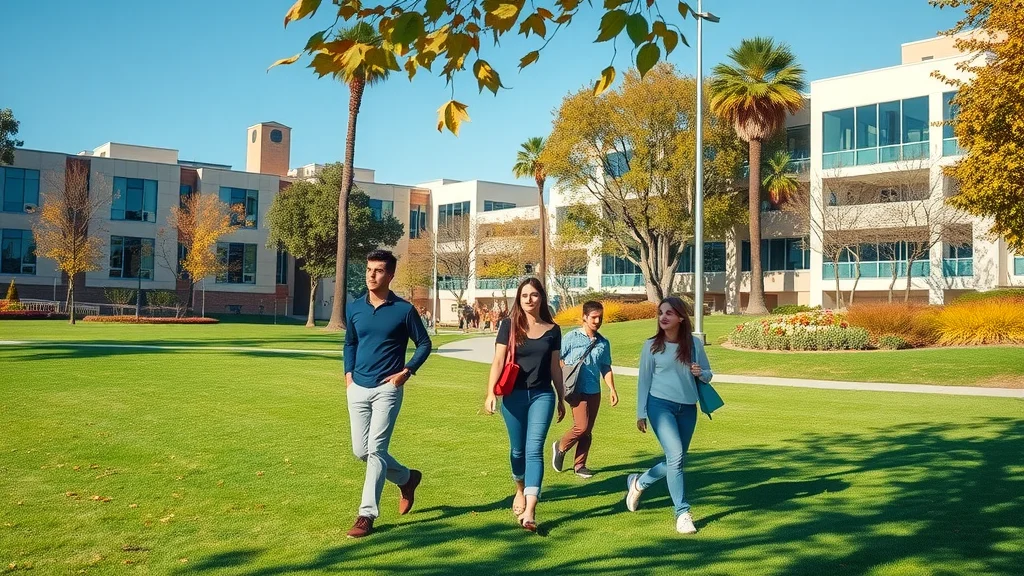
Exploring Lesser-Known Local Gems: The Hidden Side of Irvine, CA History
Irvine, CA history is not just about big milestones it lives in the city’s hidden corners and lesser-known attractions. Nature lovers and curious explorers can trace old cattle paths at Bommer Canyon, a preserved section of Irvine Ranch history. The Irvine Historical Museum houses artifacts from the ranch days, and the San Joaquin Marsh & Wildlife Sanctuary offers a glimpse at wildlands much as they would have appeared to early settlers. These gems provide a sense of connection to the land’s rugged past and invite discovery beyond the city’s bustling business centers.
Whether you’re hiking, bird-watching, or learning about historic figures at a local museum, exploring these sites helps you feel the living heartbeat of Irvine a place that cherishes its roots while moving boldly toward the future.
Bommer Canyon and historic trails
The Irvine Historical Museum
San Joaquin Marsh & Wildlife Sanctuary
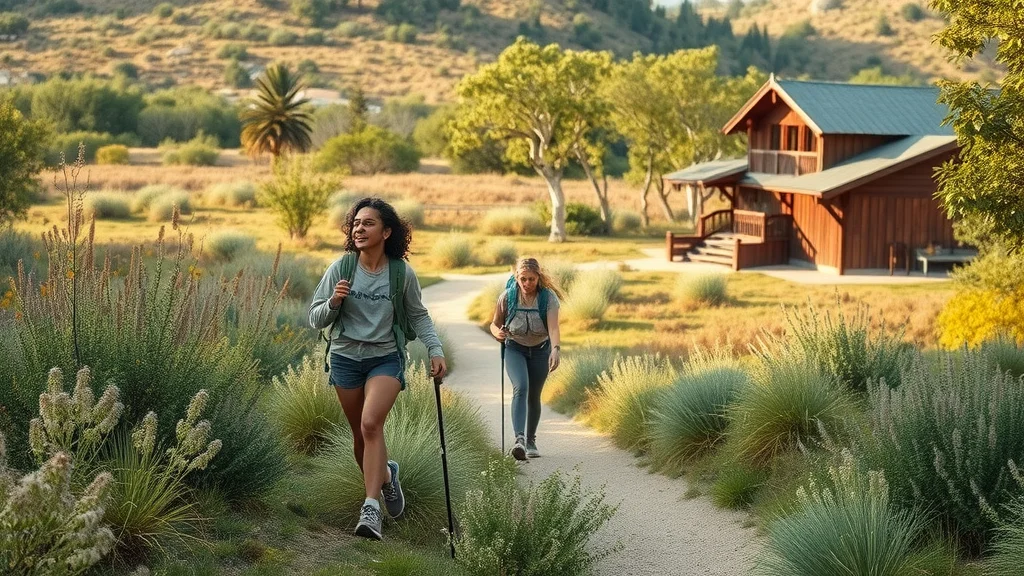
People Also Ask: Essential Questions About Irvine, CA History
Why is Irvine, California famous?
Irvine is famous for being a model master-planned city that blends green spaces, safe neighborhoods, and top-rated schools. Its roots go back to one of the largest private ranches in the United States, and its transformation is a testament to visionary leadership, particularly by the Irvine Company. Today, it’s widely recognized for its high quality of life, innovative urban development, strong economy, and vibrant diversity.
Who is the secret billionaire in Irvine?
The “secret billionaire” most often referenced in relation to Irvine, CA history is Donald Bren, the chairman of the Irvine Company. He is known for being intensely private yet instrumental in shaping Irvine’s landscape, directing much of the city’s development and preservation efforts that define modern Irvine.
Where did the Irvine family come from?
The Irvine family, particularly James Irvine, who laid the foundation for the Irvine Ranch, originally hailed from Ireland and then settled in California during a wave of gold rush and post-gold rush migration. The family’s blend of entrepreneurial spirit and agricultural expertise turned vast landholdings into a touchstone for what would become irvine, ca history.
Why do a lot of Asians live in Irvine?
The sizable Asian community in Irvine reflects decades of targeted educational opportunities, especially the presence of the University of California, Irvine, safe neighborhoods, and a welcoming, inclusive environment. Asian families have been drawn by top-ranked schools, diverse communities, and abundant career growth, helping Irvine develop into a multicultural city celebrated for its global connections.
Irvine, CA History FAQs: Everything You Need to Know
What is the oldest building in Irvine? The oldest standing structure is the San Joaquin Ranch House, now part of the Irvine Historical Museum.
How did Irvine, CA become a tech hub? Thanks to UCI, a highly educated workforce, and the master-planned design attracting tech companies, the city naturally evolved as a technology and research hub.
What role did Great Park play in local history? The Orange County Great Park transformed from a major Marine Corps Air Station to a massive recreational and cultural center, connecting the city’s military and civilian histories.
When was the master plan initiated? The master plan for Irvine was finalized and put in motion in the mid-1960s, after UCI’s selection and before city incorporation in 1971.
Key Takeaways from Irvine, CA History
Irvine’s roots date back to strategic land deals in the 1800s
The master plan guided growth for safety and livability
Diverse communities drive Irvine’s modern character
Innovation, education, and preservation shape its ongoing legacy
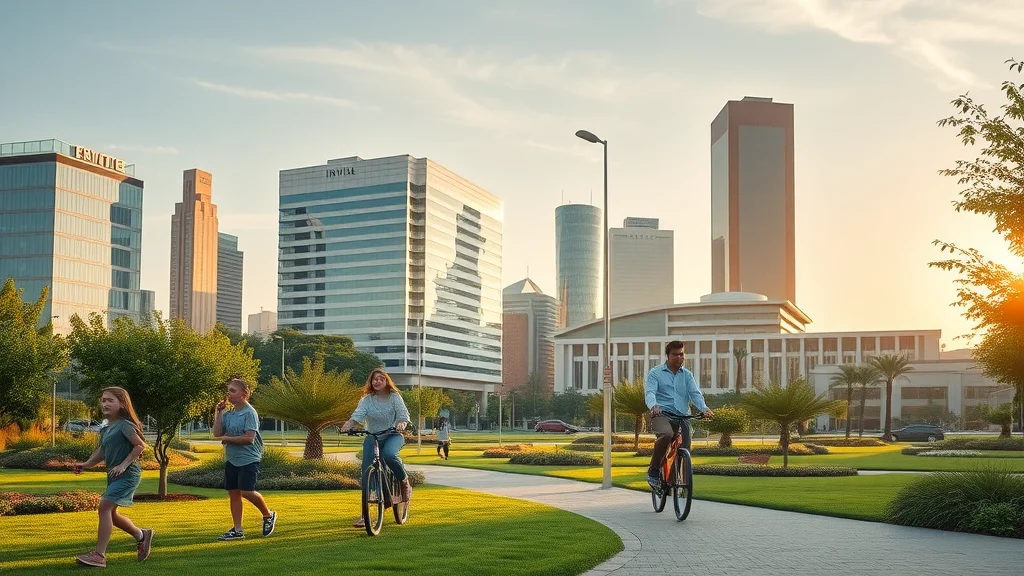
Looking Forward: The Future of Irvine, CA History and Why It Matters
As Irvine grows, it continues evolving its identity, respecting its ranch roots, embracing modern technology, and welcoming new communities. The legacy of careful planning and innovation ensures that Irvine, CA, history will remain a source of inspiration for future generations, highlighting the importance of vision, adaptability, and inclusivity in urban success.
Stay Ahead with Local Authority: Partner with Experts for More on Irvine, CA History
The Daro Digital Team hopes this article has been interesting and valuable to you. Do you have any questions or would you like us to help your company with Local Marketing and becoming a Trusted Topical Authority in your industry? Send us an email: info@darodigitalmedia.com or schedule a call with us at https://talkwithrob.com
Sources
City of Irvine – https://www.cityofirvine.org/news-media/history-city-irvine
Wikipedia – https://en.wikipedia.org/wiki/Irvine,_California
Irvine Ranch - OC Parks – https://www.ocparks.com/irvine-ranch
University of California, Irvine – https://uci.edu/about/history.php
Orange County Great Park Framework – https://greatparkframework.com/
To deepen your understanding of Irvine’s rich history, consider exploring the following resources:
The City of Irvine’s official website provides a comprehensive overview of the city’s incorporation, governance, and development as one of the nation’s largest planned urban communities.
The Wikipedia page on Irvine, California offers detailed insights into the city’s origins, demographic evolution, and key historical milestones.
These resources offer valuable perspectives on Irvine’s transformation from vast ranchlands to a thriving, master-planned city.
 Add Row
Add Row  Add
Add 

